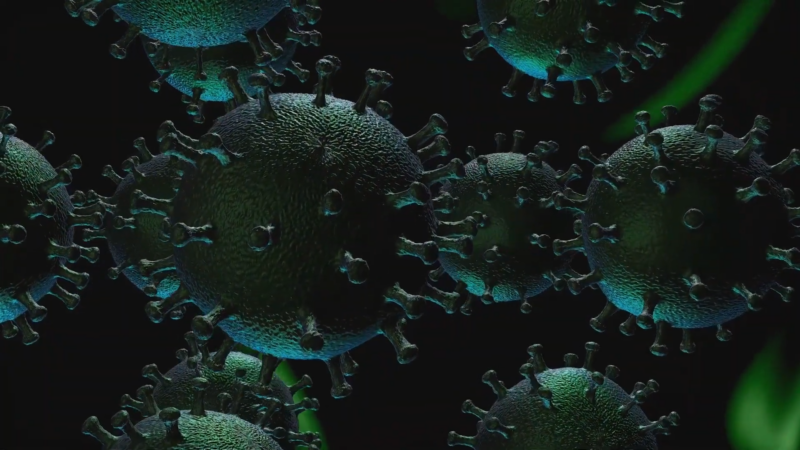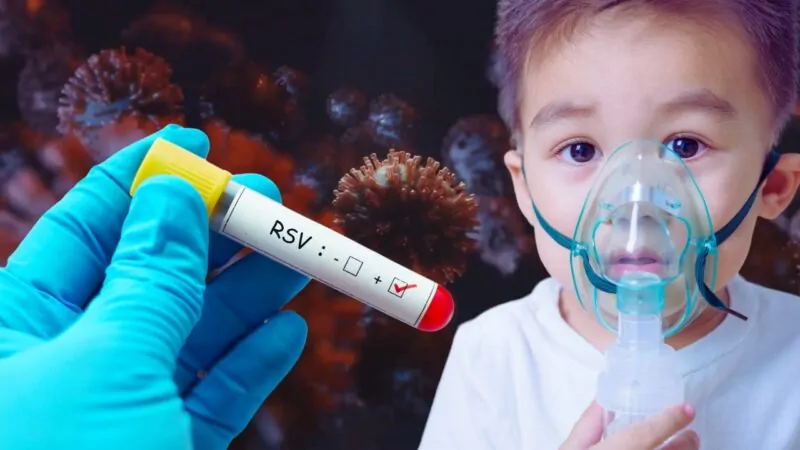RSV has been a real problem for babies around the world for a while now. A new study shows that the number of babies dying from this virus has gone up and down over the past 10 years, but it’s still a major issue – especially in poorer countries where healthcare is harder to come by. So, globally we should be more focused on RSV mortality rates.
The study found that the places with the highest rates of babies dying from RSV are in sub-Saharan Africa and South Asia.
That’s because, in those regions, a lot of families don’t have easy access to vaccines and treatments that could help. On the other hand, richer countries have seen the number of RSV deaths go down, thanks to better healthcare and vaccination programs.
Table of Contents
ToggleKey Statistics and Insights
RSV affects millions of infants each year, with the virus leading to serious respiratory illnesses that often require hospitalization. Here are some key statistics that highlight the scale of this problem:
- In 2015, it was estimated that RSV caused 33.1 million episodes of LRTI globally in children under five years old, resulting in approximately 3.2 million hospitalizations and around 60,000 in-hospital deaths. When community-based deaths are considered, that figure rises to nearly 118,200 deaths according to Cheryl Cohen.
- In 2016, RSV was responsible for 10.7 million LRTI episodes and more than 41,000 deaths in children under five.
- By 2019, the estimates for RSV-associated hospitalizations ranged between 2.5 and 4.1 million, indicating that this virus continues to be a major concern, especially in low-income settings.
Socioeconomic Disparities and RSV
One big factor is how wealthy a family is. Babies from poorer families are more at risk of getting really sick from RSV. That’s because things like malnutrition, crowded living spaces, and not being able to see a doctor right away can make the infection worse. The CDC says these babies are more likely to end up in the hospital or even die from RSV.
Did you know that babies living in crowded homes are up to 3 times more likely to get severe RSV compared to babies in less crowded homes? It’s crazy how much a family’s living situation can impact a baby’s health.
Another issue is that poorer regions often lack the healthcare infrastructure to properly diagnose and treat RSV. When a baby shows signs of the infection, their parents may not be able to get them to a doctor in time. This delay in medical care can be the difference between life and death for an infant with RSV.
Population Group
Mortality Rate (%)
Key Factors Associated with Mortality or Severity
Healthy Children
0.5 – 1.7
Low mortality rate; generally good outcomes
Immunocompromised Children
~60
Higher due to weakened immune systems
Children with Severe Comorbidities (e.g., neuromuscular disease, immunosuppression, malignancies)
Higher risk of mortality
Severe underlying health issues contribute to increased risk of death
High-risk Infants
Higher ICU admission and mechanical ventilation rates
Prolonged hospitalization; increased need for intensive care and mechanical support
Infants in ICU Care
1.1 – 8.6
Higher risk due to critical condition
Extracorporeal Life Support Cases
33
Very high fatality rate
Nosocomial (Hospital-acquired) RSV Infection
0 – 12.2
Increased risk due to complications from infection within the hospital setting
Seasonal Patterns of RSV Outbreaks

When RSV spreads also makes a difference. In places with four seasons, RSV cases tend to spike in the fall and winter. But in tropical areas, it can circulate year-round, with most cases coming during the rainy season. Knowing these patterns can help health officials time things like vaccination campaigns and public warnings.
Researchers have found that a 1°C increase in temperature can lead to a 10% drop in RSV cases. The virus seems to thrive in cooler, drier conditions.
Understanding these seasonal trends is crucial for developing effective prevention strategies. Health authorities can use the data to predict when outbreaks are most likely to occur and take proactive measures to protect vulnerable infants.
Where Are Babies Most at Risk?
RSV, or Respiratory Syncytial Virus, appears similar to a cold, but these symptoms could mean more. Babies are at increased risk of RSV infections, so monitor your little one closely if they appear sick.
Learn more at @cdcgov: https://t.co/tNQtdUAT3D pic.twitter.com/04LfBMPD7r— HHS.gov (@HHSGov) November 14, 2023
One of the most critical findings about RSV is the disparity between community and hospital-based deaths. Studies indicate that the majority of RSV-associated deaths in infants happen within the community rather than in healthcare facilities. This discrepancy is particularly prevalent in low-income regions, where access to medical care is limited.
For example, a recent study in Zambia measured RSV-associated mortality among infants under six months of age through post-mortem analysis, mostly conducted in a local morgue.
The study found that 7% of infant deaths were attributable to RSV, with community deaths showing a higher prevalence (9%) compared to early deaths occurring within 48 hours of hospital admission (4%).
This finding highlights the challenge of access to timely healthcare in poorer communities and underscores the critical need for effective community-level health interventions.
Cause of Hospitalization for Infants in High-Income Countries
Respiratory Syncytial Virus (RSV) is a major driver of hospital admissions for young children, particularly in high-income countries. It places a considerable burden on healthcare systems, affecting even otherwise healthy infants during their first year of life.
Country/Region
Annual Hospitalizations
Additional Insights
UK
20,000 – 30,000
Over 55,000 bed days; up to 20x higher than influenza cases in infants.
France
45,000
69% in infants under 1 year, 28% of all infant hospitalizations.
United States
2381 per 100,000 infants <1 year
Significantly higher than influenza (181 per 100,000).
South Africa
7601 per 100,000 person-years (<1 year)
Data from private hospitals indicates a significant burden.
Global
3.6 million annually
1.4 million in infants aged 0-6 months.
Across Europe, the average length of stay for RSV-related respiratory infections is typically between 2 to 4 days. RSV accounts for 9.9 to 21.2 hospital bed days per 1000 children under five annually. Worryingly, the number of hospitalizations due to RSV has been increasing steadily since 2004 according to Alasdair P.S. Munro.
RSV is not only a significant cause of infant illness but also a growing strain on healthcare resources, especially during peak seasons. This emphasizes the need for improved prevention, early diagnosis, and treatment approaches to curb its impact on the most vulnerable.
The Importance of Healthcare Access

Having good healthcare is crucial when it comes to surviving RSV. In rich countries, doctors can quickly diagnose it and give treatments that prevent the infection from becoming life-threatening. But in poorer regions, babies often don’t get medical care until it’s too late. Improving access to healthcare is key to saving more infant lives.
Studies show that infants hospitalized for RSV have a 3-5% chance of dying if they live in a low-income country, compared to less than 0.1% in high-income countries. Access to quality care makes a huge difference.
The good news is that new vaccines and medicines specifically for RSV are being developed. These can really lower the chances of a baby getting severely ill or dying. But these advanced treatments are still expensive, so they’re not easy for everyone to access. More work is needed to make sure these lifesaving tools are available everywhere, not just in wealthy nations.
Read more about the challenges and statistics surrounding the maternal mortality rate in Texas here.
Ongoing Efforts to Reduce RSV Mortality
Preventing RSV-related deaths in infants requires a combination of targeted vaccination campaigns, improved community healthcare access, and public health education. Promising interventions include:
- Vaccination of Pregnant Women: Immunizing mothers can help protect newborns during the first crucial months of life when they are most vulnerable.
- Administration of Monoclonal Antibodies: This treatment, given shortly after birth, can protect infants during the early months, significantly reducing RSV-related LRTI and mortality according to some studies.
These interventions are particularly important in low-income and high-density communities, where access to healthcare is suboptimal, and living conditions promote the spread of RSV. Implementing these preventive measures and ensuring equitable global access to vaccines and treatments could help bridge the gap and drastically reduce infant mortality caused by RSV.
References
- Deaths from RSV in young infants—the hidden community burden, Cohen, Cheryl et al. The Lancet Global Health, Volume 10, Issue 2, e169 – e170
- Estimates of the global, regional, and national morbidity, mortality, and aetiologies of lower respiratory infections in 195 countries, 1990–2016: a systematic analysis for the Global Burden of Disease Study 2016, Troeger, Christopher et al. The Lancet Infectious Diseases, Volume 18, Issue 11, 1191 – 1210
-
Blau DM, Baillie VL, Els T, Mahtab S, Mutevedzi P, Keita AM, Kotloff KL, Mehta A, Sow SO, Tapia MD, Tippett Barr BA, Oluoch BO, Onyango C, Revathi G, Verani JR, Abayneh M, Assefa N, Madrid L, Oundo JO, Scott JAG, Bassat Q, Mandomando I, Sitoe A, Valente M, Varo R, Bassey IA, Cain CJ, Jambai A, Ogbuanu I, Ojulong J, Alam M, El Arifeen S, Gurley ES, Rahman A, Rahman M, Waller JL, Dewey B, Breiman RF, Whitney CG, Madhi SA; CHAMPS Consortium. Deaths Attributed to Respiratory Syncytial Virus in Young Children in High-Mortality Rate Settings: Report from Child Health and Mortality Prevention Surveillance (CHAMPS). Clin Infect Dis. 2021 Sep 2;73(Suppl_3):S218-S228. doi: 10.1093/cid/ciab509. PMID: 34472577; PMCID: PMC8411256.
-
Kaler J, Hussain A, Patel K, Hernandez T, Ray S. Respiratory Syncytial Virus: A Comprehensive Review of Transmission, Pathophysiology, and Manifestation. Cureus. 2023 Mar 18;15(3):e36342. doi: 10.7759/cureus.36342. PMID: 37082497; PMCID: PMC10111061.
-
Munro APS, Martinón-Torres F, Drysdale SB, Faust SN. The disease burden of respiratory syncytial virus in Infants. Curr Opin Infect Dis. 2023 Oct 1;36(5):379-384. doi: 10.1097/QCO.0000000000000952. Epub 2023 Aug 23. PMID: 37610444; PMCID: PMC10487373.
- FDA Approves First Respiratory Syncytial Virus (RSV) Vaccine
- Causes of severe pneumonia requiring hospital admission in children without HIV infection from Africa and Asia: the PERCH multi-country case-control study, O’Brien, Katherine L. et al. The Lancet, Volume 394, Issue 10200, 757 – 779
Related Posts:
- How Have U.S. Birth Rates Changed Over the Last 20 Years?
- Illinois Population in 2024 - Analyzing the Latest Data
- How the US Birth Rate Has Evolved Over the Past Century
- Top 11 Causes of Mortality in Florida
- What Are the Main Causes of Mortality in Missouri?
- Key Facts About the Maternal Mortality Rate in Texas








